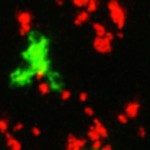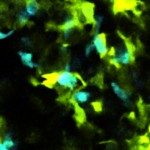Link to Pubmed [PMID] – 21552553
PLoS ONE 2011;6(4):e18916
T cells often make sequential contacts with multiple DCs in the lymph nodes and are likely to be equipped with mechanisms that allow them to sum up the successive signals received. We found that a period of stimulation as short as two hours could imprint on a T cell a “biochemical memory” of that activation signal that persisted for several hours. This was evidenced by more rapid induction of activation markers and earlier commitment to proliferation upon subsequent stimulation, even when that secondary stimulation occurred hours later. Upregulation of the immediate early gene product c-fos, a component of the AP-1 transcription factor, was maximal by 1-2 hours of stimulation, and protein levels remained elevated for several hours after stimulus withdrawal. Moreover, phosphorylated forms of c-fos that are stable and transcriptionally active persisted for a least a day. Upon brief antigenic stimulation in vivo, we also observed a rapid upregulation of c-fos that could be boosted by subsequent stimulation. Accumulation of phosphorylated c-fos may therefore serve as a biochemical fingerprint of previous suboptimal stimulation, leaving the T cell poised to rapidly resume its activation program upon its next encounter with an antigen-bearing DC.


